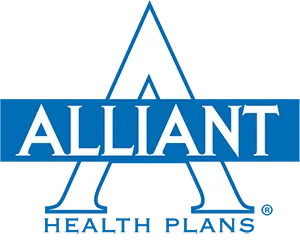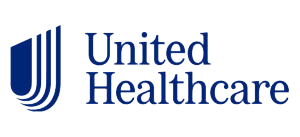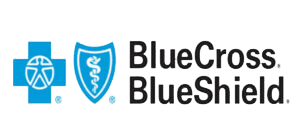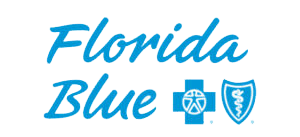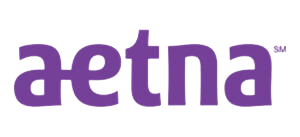Heroin Addiction Treatment Center in Rome, GA
Heroin Addiction Treatment Center in Rome, GA

Heroin addiction is a serious and complex issue affecting many lives. Heroin addiction changes the brain and behavior of those who use the drug. It’s a type of substance use disorder that can happen quickly due to heroin’s powerful effects.
Because people with heroin addiction may experience strong cravings and find it hard to stop using, even when they want to, a heroin addiction treatment center in Rome, GA, is critical.
The drug triggers the release of dopamine, a feel-good chemical in the brain. This can lead to a cycle of use that’s tough to break.
Substance abuse use can cause many health problems. When someone stops using, they may go through withdrawal symptoms like body aches, nausea, and anxiety. These symptoms can start within hours of the last dose and peak after 1-2 days.
Getting help from medical professionals and a healthcare team is often needed to stop using heroin and start recovery safely.
Understanding Heroin
Heroin is a powerful and illegal opioid drug derived from morphine. It affects the brain and body in profound ways, leading to addiction and health risks. Many heroin users transition from prescription opioids.
Origins and Chemical Structure
Heroin comes from the opium poppy plant. Workers extract morphine from the plant’s seed pods. They then process morphine to create heroin. The chemical name for heroin is diacetylmorphine.
Heroin exists in different forms:
- White or brown powder
- Black sticky substance called “black tar heroin”
The drug’s structure allows it to cross the blood-brain barrier quickly, leading to a fast, intense high. Heroin changes the brain’s chemistry, affecting how people think and feel.
Physiological Impact of Heroin Use
Heroin use has significant effects on the body. When someone takes heroin, it binds to opioid receptors in the brain. This causes:
- Intense pleasure
- Pain relief
- Slowed breathing
Short-term effects include:
- Dry mouth
- Warm skin
- Heavy limbs
- Nausea and vomiting
Long-term use can damage organs and change brain structure. It often leads to tolerance, where users need more heroin to get the same effect. This increases overdose risk.
The Transition from Prescription Opioids to Heroin
Many heroin users start with prescription opioids. These drugs, like OxyContin or Vicodin, are similar to heroin. People may switch to heroin because it’s cheaper and easier to get.
The path often looks like this:
- A person gets an opioid prescription for pain.
- They become dependent on the medication.
- The prescription runs out or becomes too expensive.
- They turn to heroin as a substitute.
This transition is common and highlights the link between legal and illegal opioids. It shows why addressing prescription opioid misuse at a rehab center is crucial in fighting heroin addiction and regaining a sense of well-being.
Unpacking Heroin Addiction
Heroin addiction alters brain chemistry and behavior. It can develop quickly and have severe impacts on a person’s life.
The Cycle of Dependence
Heroin addiction leads to both mental and physical dependence. The brain adapts to regular heroin use, changing its reward system.
Users feel a strong need to keep taking the drug. This craving can be overwhelming.
Physical dependence means the body needs heroin to function. Without it, withdrawal symptoms occur. These can include nausea, muscle aches, and intense cravings.
Development of Tolerance
Regular heroin use leads to tolerance. This means a person needs more of the drug to get the same effect.
As tolerance builds, users take larger doses. This increases the risk of overdose and other health problems.
Tolerance can develop quickly with heroin. It’s a key factor in the cycle of addiction.
Recognizing the Signs of Heroin Use and Dependence
Signs of heroin use include:
- Needle marks on arms or legs
- Constricted pupils
- Sudden weight loss
- Frequent drowsiness
- Changes in behavior or mood swings
Other signs may be:
- Financial problems
- Neglecting responsibilities
- Lying or secretive behavior
These signs can help identify heroin use early. Early detection is crucial for effective treatment through a reliable treatment program.
Comorbidity with Other Substance Use Disorders
Many people with heroin addiction also struggle with other substance use disorders. This is called comorbidity or dual diagnosis.
Common co-occurring disorders include:
- Alcohol
- Cocaine
- Prescription opioids
Substance use disorders often overlap. This makes treatment more complex.
Addressing all substance use issues is essential for recovery. Integrated treatment plans work best for comorbid conditions.
Health Impact of Heroin Use
Heroin use can lead to severe health problems, both in the short and long term. It increases the risk of infectious diseases and can cause deadly overdoses.
Short-Term and Long-Term Effects
Heroin use has immediate and lasting impacts on health. Short-term effects include drowsiness and decreased mental functioning. Users may experience a “rush” but also nausea and confusion.
Long-term effects are more severe. Regular use can damage the liver, kidneys, and lungs. It may cause:
- Collapsed veins
- Skin infections
- Heart problems
- Chronic constipation
Heroin also affects the brain, leading to changes in behavior and decision-making. Mental health issues like depression often develop. When a person stops using, they face difficult withdrawal symptoms such as:
- Muscle and bone pain
- Insomnia
- Diarrhea
- Cold flashes
Risk of Infectious Diseases
Heroin use greatly increases the risk of catching infectious diseases. People who inject the drug often share needles, spreading viruses through blood contact.
HIV and hepatitis C are common among heroin users. These diseases can cause lifelong health problems and may be fatal. Hepatitis B is also a risk.
Skin and soft tissue infections are frequent. Users may develop painful abscesses or get serious blood infections. These can damage the heart valves and lead to other organ problems.
Signs of Heroin Overdose
Heroin overdose is a life-threatening emergency. Signs include:
- Slow or stopped breathing
- Blue lips or fingernails
- Pinpoint pupils
- Unconsciousness
Overdoses happen when a person takes too much heroin or mixes it with other drugs. The risk is higher for those who relapse after a period of not using.
Naloxone can reverse an overdose if given quickly. But brain damage or death can occur if help doesn’t arrive fast enough. The risk of overdose has increased with stronger heroin and the addition of fentanyl to street drugs.
Treatment Approaches
Treating heroin addiction involves several methods that work together to help people recover. These approaches aim to stop drug use, manage withdrawal, and prevent relapse.
Role of Medical Detoxification
Detox is often the first step in treating heroin addiction. It helps the body get rid of the drug and manage withdrawal symptoms. Medically supervised at a drug rehab facility, detox is safer than quitting cold turkey.
During detox, doctors may give medicines to ease discomfort. Common symptoms include muscle aches, nausea, and anxiety. The process usually lasts 5-7 days but can vary.
After detox, patients often move on to other treatments. Detox alone is not enough to maintain long-term recovery from heroin addiction.
Medication-Assisted Treatment
Medication-assisted treatment (MAT) uses FDA-approved drugs to help manage cravings and withdrawal. It’s often combined with counseling for better results.
Common medications used in MAT include:
- Methadone: Reduces cravings and withdrawal symptoms
- Buprenorphine: Lowers the risk of misuse and eases withdrawal
- Naltrexone: Blocks the effects of heroin
These meds can help people stay in treatment longer and reduce illicit drug use. They also lower the risk of overdose and disease transmission.
Behavioral Therapies and Psychosocial Support
Behavioral therapies play a crucial role in heroin addiction treatment. They help people change harmful thoughts and behaviors linked to drug use.
- Cognitive-behavioral therapy (CBT) teaches skills to cope with cravings and avoid triggers. It also addresses mental health issues that may contribute to addiction.
- Dialectical-behavioral therapy (DBT) helps individuals participate in their own treatment. It teaches essential skills for managing emotions, impulsive behavior, and relationships. Individuals set goals, track progress, and make decisions about their treatment.
- Contingency management offers rewards for staying drug-free. This can motivate people to stick with treatment and make positive changes.
- Support groups such as group therapy provide a sense of community and shared experience. They offer encouragement and practical tips for maintaining sobriety.
- Family therapy can mend relationships damaged by addiction. It also teaches loved ones how to support recovery.
- Holistic therapies, such as yoga, meditation, and connecting with nature, are proven treatment options. A holistic approach addresses the mind, body, and soul.
Challenges in Overcoming Addiction
Breaking free from drug addiction involves facing several obstacles. These hurdles can make recovery a complex journey that requires ongoing effort and support.
Relapse and Maintenance of Sobriety
Relapse is a common challenge for people with opioid use disorder (OUD). Cravings for heroin can be intense and long-lasting. Stress, anxiety, and exposure to triggers can increase the risk of relapse and slow down the recovery journey.
Staying sober requires developing new coping skills. This often includes:
- Learning stress management techniques
- Building a support network
- Attending therapy or support groups
- Taking prescribed medications as directed
Maintaining sobriety is an ongoing process. It’s normal to face ups and downs. Many people need multiple attempts before achieving long-term recovery.
Outside Factors
Social and environmental factors play a significant role in addiction recovery. Old friends who use drugs can make staying clean harder. Returning to places associated with drug use may trigger cravings.
Creating a new social circle is important. This might involve:
- Making friends in support groups
- Reconnecting with family
- Finding sober activities and hobbies
Living situations can also affect recovery. Stable housing away from drug-using environments helps. Some people benefit from sober living homes during early recovery.
Economic Strain
Heroin addiction often leads to financial and legal troubles. These issues can make recovery more challenging.
Economic problems may include:
- Job loss or difficulty finding work
- Debt from drug use or treatment costs
- Lack of stable housing
Legal issues might involve:
- Arrest records
- Ongoing court cases
- Probation or parole requirements
These factors can add stress and create barriers to treatment. Some people struggle to afford treatment facilities or medications. Others face challenges finding jobs or housing due to criminal records.
Support services at Fairland Recovery Center’s drug rehab program can help address these issues. A comprehensive recovery plan may include job training, legal aid, and financial counseling.
Prevention and Education
Stopping heroin addiction before it starts is vital. Good prevention uses many methods, like teaching people about risks, making it harder to get drugs, and helping those at risk. These efforts can make a big difference toward wellness.
Strategies to Prevent Heroin Use and Addiction
Early intervention is crucial. Schools can teach kids about drug risks starting young. This helps them make smart choices later.
Doctors should be careful when prescribing opioid pills. Misusing these can lead to heroin use.
Community programs matter, too. They can offer fun, drug-free activities for teens. Support groups help people dealing with stress or mental health disorders. These are risk factors for drug use.
Stopping other drug use early helps prevent heroin use. Alcohol and marijuana are often used first. Getting help for these can stop worse drug problems later.
Educational Programs and Outreach
Many groups run drug education programs. They teach about heroin’s dangers and how to avoid it.
Schools, churches, and community centers often host these.
Some key topics covered:
- How heroin affects the body and brain
- Signs of heroin use and addiction
- Where to get help if someone is using
- How to say no to peer pressure
Outreach efforts target high-risk groups. This includes homeless youth or people leaving jail. They provide info, clean needles, and treatment options. The goal is to prevent use and reduce harm.
Public awareness campaigns use ads and social media. They share facts about heroin risks. This helps fight false ideas that heroin is safe to try.
Advancements in Research
Scientists have made big steps in understanding heroin addiction. They now know more about how drugs change the brain. This helps them make better treatments.
New studies look at why people crave drugs. They use brain scans to see what happens when someone wants heroin. This info helps doctors find ways to stop cravings.
Researchers are testing new medicines. These might help people quit heroin more easily. Some drugs can lower withdrawal symptoms. Others may stop overdoses.
Opioid research has grown a lot. Scientists study why some people get addicted and others don’t. This could lead to better prevention.
Doctors are learning more about babies born to moms who use heroin. They call this neonatal abstinence syndrome. New treatments help these babies feel better.
Technology is changing addiction treatment. Apps can now track drug use and mood. This helps people stay clean. Virtual reality might even help people practice saying no to drugs.
Genetic studies are exciting, too. They show some people may be more likely to get addicted. This could lead to personalized treatments in the future.
Recovery and Rehabilitation
Recovery from heroin addiction is possible with proper treatment and support. Many people have overcome addiction and gone on to lead fulfilling lives. The road to recovery often involves professional help and lifestyle changes.
Success Stories and Rehabilitation Journeys
Treatment for heroin addiction can include medication and behavioral therapy. These approaches help restore brain function and reduce cravings.
Some people find success with inpatient rehab programs, while others do well with outpatient treatment, intensive outpatient programs (IOP), or partial hospitalization programs (PHP).
Many former users say exercise and healthy habits are important. Rebuilding relationships with family and friends often takes time and effort. Small victories add up on the path to long-term sobriety.
Life after Heroin Addiction
Recovery is an ongoing process that extends beyond initial treatment. People in recovery often need to make major life changes.
This may include finding new social circles and avoiding old triggers.
Many focus on building a sense of purpose. This could mean pursuing education, starting a career, or volunteering.
Developing new hobbies and interests is common. Some find meaning in helping others overcome addiction.
Maintaining physical and mental health becomes a priority. Regular check-ups and therapy sessions are often part of long-term recovery plans.
Some people may need ongoing medication to manage cravings or mental health issues.
Rebuilding trust with loved ones takes time. Many find that open communication and making amends are important steps.
Success in recovery often means creating a new, fulfilling life without heroin.
Find Hope and Healing at Our Heroin Addiction Treatment Center in Rome, GA
Take the first step towards a brighter future today. If you or a loved one are struggling with heroin or opioid addiction, don’t wait any longer—help is just a call away. Contact Fairland Recovery Center in Rome, GA, to speak with compassionate professionals who understand substance abuse treatment.
Experience personalized care and support tailored to your needs. Visit our website or call us now to begin your path to recovery and reclaim your life. You are not alone—let us guide you towards healing and hope.
Fairland Recovery Center Treatments
Find Help Now
We accept most major insurances


